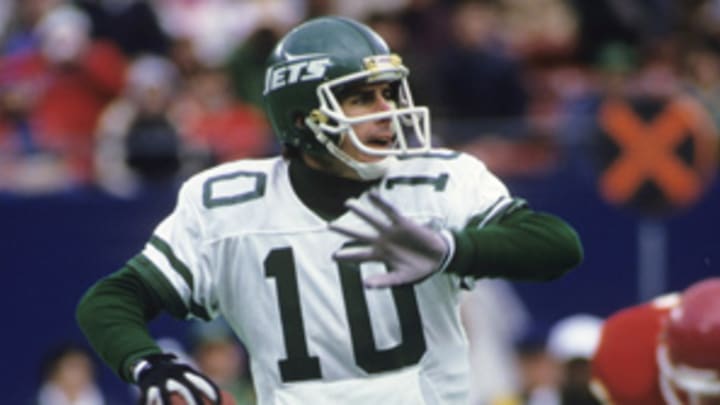It takes a certain type of player to be successful NFL backup QB


He was signed two days ago, and if you somehow missed the news, well, consider yourself excused.
Because the New York Jets appear to be the thinking fan's pick to win Super Bowl XLV, and because the organization has spent this offseason adding seemingly every available impact player, it was easy for the acquisition of a 39-year-old backup quarterback like Mark Brunell to slip through the cracks.
And yet, as any fan of the Jeff Hostetler-led 1990 New York Giants or Kurt Warner-led 1999 St. Louis Rams will tell you, the gap between Super Bowl contender and bust can occasionally be determined by the quality of a reserve signal-caller. Hence, Brunell arrives in the Big Apple, apparently to supplant Kellen Clemens, thebackup for the past four seasons.
When football fans speak of Jets quarterbacks, all comparisons tend to begin and end with Joe Namath. Yet should Brunell be deemed a success, his performance will have to measure up to another strong-armed Jet passer, one so immortalized by the people of New York that, were he to walk through the streets of Manhattan tomorrow, wearing his old jersey and screaming "I'm Pat Ryan!, maybe one out of 100 people recognize him. Maybe.
But while Namath goes down as one of a large handful of greats at his position, an argument can be made (and, in this writer's opinion, should be made) that Pat Ryan is the best backup quarterback to ever play the game.
Does that mean most talented backup quarterback to ever play the game?
No.
Most intelligent?
No.
Most savvy?
No.
Greatest potential to one day become a star?
Definitely not.
What made Ryan, the Jets' backup from 1978-89, so good was that, come day's end, he knew the exact specifics of his job -- and found himself thrilled to be doing it. "I felt like I could play," says Ryan, "and I was confident of my abilities. But for most of my time in New York Kenny [O'Brien] was the starter, and he was more talented than I was. He could throw that ball like few others. I wasn't there to fool myself, or fight for his job. I was there to support him and the team, and to be ready."
In 12 seasons with the Jets, Ryan, a career reserve at the University of Tennessee before being selected in the 11th round of the '78 Draft on the basis of his strong arm -- started 19 games. Eleven of those came in 1984, when O'Brien had to devote time to a legal issue (he and teammate Mark Gastineau were involved in a highly publicized melee at Studio 54) and wasn't practicing enough to prepare properly. Two seasons later, after the Jets started 10-1 before losing their final five regular-season games, Ryan replaced O'Brien, even leading the team to a playoff win over Kansas City. His career statistics 4,320 yards, 31 touchdown passes, 35 interceptions) are neither spectacular nor substandard. They ooze backup. "Pat sacrificed his own shot at notoriety in the name of the team," says Mickey Shuler, a longtime Jets tight end. "He was able to do everything all the starting quarterbacks in the league could do, but he wasn't going to make trouble."
Indeed, O'Brien's caddy never complained about his role. Never. Neither, for that matter, will the classy Brunell. But if Jets fans were always comfortable with Ryan, now 55 and working as a home builder in Knoxville, they should feel less so with Brunell. To begin with, he is old -- 39 chronologically, 150 in NFL years. His mobility isn't what it once was, his arm not nearly as strong as the golden days in Jacksonville. "You need a backup to be able to lead the team for a prolonged stretch if the starter is hurt," says Ryan. "That's key."
Brunell is an excellent motivator, a wonderful confidant, a perfect player/coach for the green Mark Sanchez. He is not, however, a man with a full tank. Or, for that matter, a half tank.
What if Sanchez gets hurt in Week 3 or 4? Can the team still consider itself a Super Bowl contender with Brunell at the helm? Can he carry them through the tough ones?
Pat Ryan sure could.
